
Jumping spiders or the Salticidae are a family of spiders. As of 2019, it contained over 600 described genera and over 6000 described species, making it the largest family of spiders at 13% of all species. Jumping spiders have some of the best vision among arthropods and use it in courtship, hunting, and navigation. Although they normally move unobtrusively and fairly slowly, most species are capable of very agile jumps, notably when hunting, but sometimes in response to sudden threats or crossing long gaps. Both their book lungs and tracheal system are well-developed, and they use both systems. Jumping spiders are generally recognized by their eye pattern. All jumping spiders have four pairs of eyes, with the anterior median pair being particularly large.

Huntsman spiders, members of the family Sparassidae, are known by this name because of their speed and mode of hunting. They are also called giant crab spiders because of their size and appearance. Larger species sometimes are referred to as wood spiders, because of their preference for woody places. In southern Africa the genus Palystes are known as rain spiders or lizard-eating spiders. Commonly they are confused with baboon spiders from the Mygalomorphae infraorder, which are not closely related.

The spider genus Steatoda, in the family Theridiidae, includes about 120 recognized species, distributed around the world. One common name is cupboard spider, for many species build their webs in dark, sheltered, undisturbed places around the house or garden, in sheds and garages, under garden furniture, compost bins, and the like. Signs of the cupboard spider include small white spots of spider droppings, like small splashes of paint, on the floor underneath the web.
Nihoa is a genus of South Pacific brushed trapdoor spiders first described by Tracey Churchill & Robert Raven in 1992. It is named after the island Nihoa, where the type species is endemic.

Castianeira is a genus of ant-like corinnid sac spiders first described by Eugen von Keyserling in 1879. They are found in Eurasia, Africa, and the Americas, but are absent from Australia. Twenty-six species are native to North America, and at least twice as many are native to Mexico and Central America.
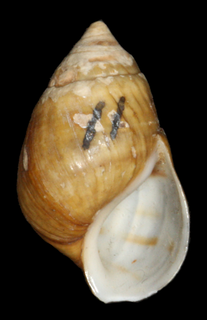
The squat elimia is a species of freshwater snail with an operculum, aquatic gastropod mollusk in the family Pleuroceridae. This species is endemic to the United States.
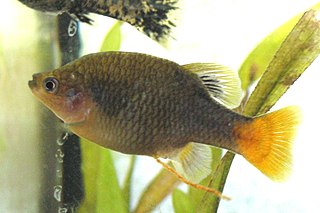
Xenotoca is a genus of fish in the family Goodeidae from Mexico, where found in a wide range of habitats, from rivers and creeks to pools and lakes, in the Lerma–Grande de Santiago, Panuco, Cuitzeo and other basins of the Mesa Central. While no goodeid is a very common aquarium fish, the redtail splitfin, is one of the most common aquarium goodeids. Its relatively bright colors offset its reputation for being aggressive towards tankmates, occasionally even killing them. Similarly to that species, two species described in 2016 have males with red-orange tails, but this feature is not shared by the remaining members of the genus. The Xenotoca species are small, reaching up to 9 cm (4 in) in standard length.
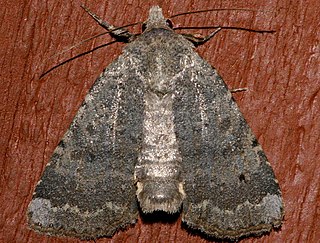
Abagrotis variata is a moth of the family Noctuidae first described by Augustus Radcliffe Grote in 1876. It is found in North America from British Columbia to California, east to New Mexico and Alberta.

Spiders are air-breathing arthropods that have eight legs, chelicerae with fangs generally able to inject venom, and spinnerets that extrude silk. They are the largest order of arachnids and rank seventh in total species diversity among all orders of organisms. Spiders are found worldwide on every continent except for Antarctica, and have become established in nearly every habitat with the exceptions of air and sea colonization. As of July 2019, at least 48,200 spider species, and 120 families have been recorded by taxonomists. However, there has been dissension within the scientific community as to how all these families should be classified, as evidenced by the over 20 different classifications that have been proposed since 1900.
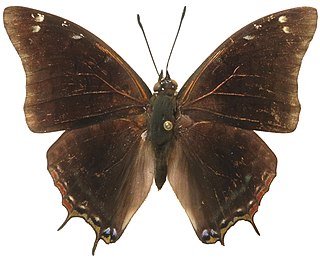
Charaxes variata is a butterfly in the family Nymphalidae. It is found in central, southern and north-western and western Zambia. The habitat consists of Cryptosepalum forests.

Thera vetustata is a moth of the family Geometridae. It is found from Spain through Central Europe to the Balkan Peninsula. It is not found in Fennoscandia. In the Alps it is found up to altitudes of 1,600 meters.
Aria variata alla maniera italiana in A minor, BWV 989 is a keyboard work by Johann Sebastian Bach from around 1709, recorded in the Andreas Bach Book. It consists of a theme and 10 virtuoso variations, each of them in binary form. The work was probably created for a harpsichord, but there are numerous recordings with other instruments, notably with piano and organ. It shares many formal similarities with the later Goldberg Variations.
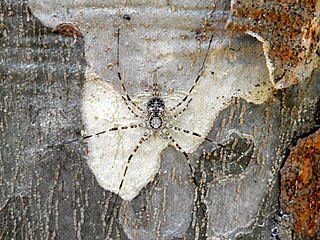
Neotama is a genus of tree trunk spiders that was first described by M. Baehr & B. Baehr in 1993.
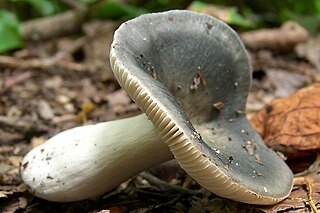
Russula variata is an edible basidiomycete mushroom of the genus Russula native to North America.
Philodamia is a genus of spiders in the family Thomisidae. It was first described in 1894 by Thorell. As of 2017, it contains 7 species.
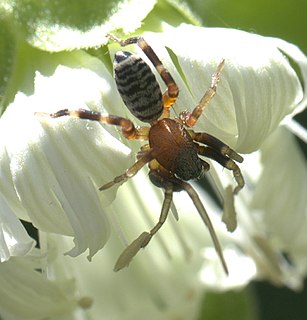
Castianeira variata is a species of spider in the family Corinnidae, found in North and Central America. The body length is typically 7 to 9 mm, the females being larger. Castianeira variata is similar in general appearance to C. longipalpus. The carapace dark reddish brown to nearly black with thin white hairs, darker on the sides.
Steatoda variata is a species of cobweb spider in the family Theridiidae. It is found in the United States and Mexico.

Neotama mexicana, also known as the long-spinneret spider or Mexican two-tailed spider, is a species of tree trunk spider in the family Hersiliidae. It is found in a range from the United States to Peru and Guyana.












